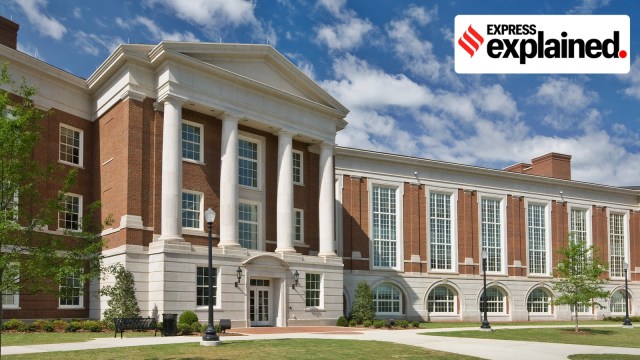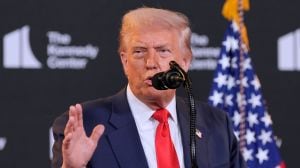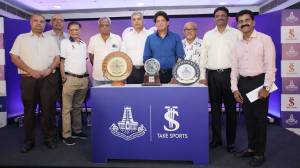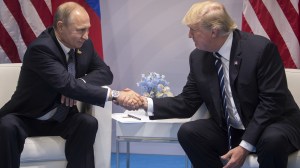Explained: The Bill to end Optional Practical Training program in US, how it may impact international students
The OPT program allows international students in the US to work for up to 12 months in a field related to their area of study. Around 29% of Indian students were on OPT in 2023-24.
 South Engineering Research Center, a College for Education in engineering within the University of Alabama. (Wikimedia Commons)
South Engineering Research Center, a College for Education in engineering within the University of Alabama. (Wikimedia Commons)A Bill was introduced in the US House of Representatives, the lower house of the country’s legislature, late last month to end the Optional Practical Training program that authorises international students to work temporarily in the US.
Paul Gosar, Arizona’s Republican Congressman, introduced The Fairness for High-Skilled Americans Act of 2025 on March 25. It came amid a section of US President Donald Trump’s supporters claiming that jobs are being taken away from Americans in favour of foreign workers. They have previously criticised the H-1B visas that allow Indian tech professionals to work in the US and have argued that the OPT program also favours international students in employment.
The program has become increasingly popular among international students – including many Indian students in Science, Technology, Engineering and Mathematics (STEM) related fields. Here is what to know.
What is the OPT program?
The OPT program allows students (who are in the US on F1 visas) to work for up to 12 months in a field related to their area of study. This can be a ‘pre-completion OPT’ – before the student completes their studies – or a ‘post-completion OPT’, which allows the student to work after graduating. For the pre-completion OPT, international students must be enrolled in a full-time course in the US for at least one academic year.
Students in STEM fields can extend their OPTs by another 24 months. This effectively means that a student in a STEM field can work in the US for three years after graduation.
How popular is the OPT program, and why?
Of the 1,126,690 international students in the US in 2023-24, 2.43 lakh (around 22% of the total) were on OPT, according to data from Open Doors. This was an uptick from 1.99 lakh students in 2022-23 and a twofold leap from the 1.06 lakh students on OPT a decade ago (2013-14).
Of the 3,31,602 Indian students in the US, around 29% or 97,556 students were on OPT in 2023-24. One Indian student enrolled in a Masters in Engineering Management program applied for the extension under STEM OPT, saying it offers a way to earn and pay off student loans for international students. Additionally, the work experience can provide a pathway to an H-1B visa, he said.
As STEM courses see the highest enrollment among international students in the US, the STEM OPT is also highly sought after. Of the total number of international students in the US, the highest enrollment is in the maths and computer science field (2.82 lakh students across programs, or 25% of the total). This is followed by 2.10 lakh enrolled in engineering courses. Among Indian students too, the most popular field of study is mathematics and computer science (42.9% of Indian students in the US were enrolled in these fields in 2023-24).
What does the Bill say?
The Bill aims to eliminate OPT, but only for those “no longer engaged in full-time study in the United States,” meaning the post-completion OPT.
Congressman Gosar said in a statement that it “does not prohibit F1 students from working in the United States while in school.” It added that the Bill “simply terminates an unauthorised and unfair program that allows F1 students to remain in the United States for another three years following the completion of their education.”
He added: “The OPT program completely undercuts American workers, particularly higher-skilled workers and recent college graduates, by giving employers a tax incentive to hire inexpensive, foreign labour under the guise of student training.”
The statement said that OPT circumvents the cap on H1B visas and “incentivizes greedy businesses to fire Americans” and that having foreign workers eliminates the need to comply with certain regulations, like the FICA (Federal Insurance Contributions Act) and Medicare payroll taxes.
Gosar introduced a Bill with the same name and purpose in 2019, but it was not passed. It was referred to a subcommittee on immigration and citizenship and was ultimately not voted on. As part of his electoral campaigns, Trump has successfully bolstered the sentiment that these programs are unfair to American workers. At the same time, US companies benefit from the skills these workers bring in at a comparatively lower salary level.
On the Bill, Rekha Sharma-Crawford, an attorney in Kansas, Texas, who also deals with immigration cases, said: “I cannot imagine that businesses will be in favor of such a dramatic departure from the norm. The US has always relied on foreign labor and if this were to pass, I think there would be an enormous outcry from both the public and private sector.”
Photos




- 01
- 02
- 03
- 04
- 05

































